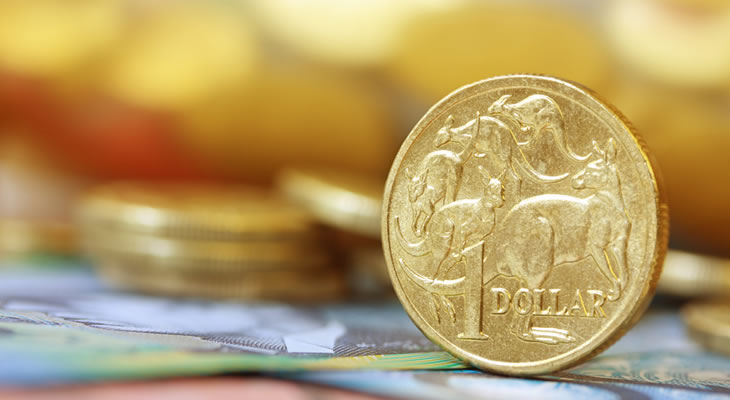- Pound Sterling (GBP) Exchange Rates Hold Recent Gains – Sharp drop in consumer confidence not enough to provoke depreciation
- Australian Dollar (AUD) Exchange Rates Edge Higher – Market sentiment neutral after Asian stocks declined but commodity prices advanced
- US Non-Farm Payrolls Forecast to Provoke Volatility – Weak result to push AUD higher
Despite the fact that British consumer confidence saw its sharpest drop in 21 years, while May’s trade deficit widened, the Pound continues to extend its recovery versus major peers. The appreciation is mostly consolidative amid concerns that the reaction to the Bank of England’s (BoE) hints of a near-term rate cut was overdone.
The Australian Dollar also managed to edge higher versus most of its currency rivals despite neutral market sentiment. Now that it seems the coalition government will retain office, easing uncertainty has seen support for the ‘Aussie’ (AUD).
Pound to Australian Dollar (GBP AUD) Exchange Rate Forecast to Strengthen
Given that Sterling has advanced over the past few days irrespective of domestic data results, there is a good chance that the British asset will hold gains throughout today’s European session.
However, weak data results will still be of concern to traders as the impact of Brexit uncertainty begins to show signs of economic damage.
Of particular disappointment was the GfK Post-Referendum Consumer Confidence report which dropped from -1 to -9, the sharpest drop since 1994.
‘During this period of uncertainty, we’ve seen a very significant drop in confidence,’ said GfK’s Joe Staton. ‘Every one of our key measures has fallen, with the biggest decrease occurring in the outlook for the general economic situation in the next 12 months.’
British data also showed that the trade deficit widened in May, although the previously figure was positively revised and the deficit remained better than the market consensus. May’s Total Trade Balance dropped from -£1950 million to -£2263 million.
Despite the slump in exports in May, some analysts predict that trade will contribute to the UK’s growth.
‘Along with healthy retail sales in May and April, and much improved industrial production overall in May/April, the trade data suggest that UK GDP growth could actually have improved in the second quarter despite the heightened uncertainty over the EU membership referendum and likely markedly weaker activity in June,’ said HIS economist Howard Archer.
The Pound to Australian Dollar exchange rate dropped to a low of 1.7210 during Friday’s European session.
US Labour Market Data Predicted to Provoke Pound to Australian Dollar Exchange Rate Volatility
Although equity markets in Asia ended the local session down, several key commodity prices, including crude oil, advanced.
This saw market sentiment turn neutral, with the Australian Dollar gaining a slight edge thanks to reduced demand for the US Dollar.
Also supportive of demand for the ‘Aussie’ was news that the coalition government look set to retain office. Prime Minister Malcom Turnbull’s economic strategy has been questioned by investors, but the avoidance of any major shift in policy will ease trader uncertainty.
‘The aim is to ensure that we have a good, open, working relationship and a constructive Parliament that is, perhaps not united on every measure, at least united in the determination to serve the Australian people in a very constructive and positive way over the next three years,’ stated Mr. Turnbull.
However, one thing limiting the appeal of the ‘Aussie’ and potentially causing significant losses in the future was a recent announcement from credit rating agency Standard & Poor’s. S&P stated that there was a one-in-three chance that Australia’s AAA rating will be cut.
S&P’s associate director for sovereign ratings, Anthony Walker, said; ‘What we’ve seen recently is that the parliamentary gridlock, particularly in the Senate, has slowed down this progress and after this week’s election we don’t see that improving any time soon. If we believe that the Parliament is unlikely to narrow the budget deficit, get a balanced position in the early 2020s, particularly June 30th 2021, there could be some action.’
Pound to Australian Dollar Exchange Rate Forecast: BoE Rate Decision in Focus
Next week there will be a number of highly influential ecostats with potential to provoke significant Pound to Australian Dollar exchange rate volatility.
Thursday’s session will be particularly significant, with key Australian labour market data due for publication and the Bank of England’s (BoE) interest rate decision.
Given the fallout from Brexit and recent hints of BoE intervention, there is a very high chance that the central bank will vote to cut the base rate. This would see the GBP AUD exchange rate dive.
The Pound to Australian Dollar (GBP AUD) exchange rate reached a high of 1.7313 during Friday’s European session.


Comments are closed.